There’s a kind of quiet magic in a quilt. It doesn’t hum or shine or glow, but it holds warmth like nothing else. And not just the warmth of flannel or wool but the warmth of memories, of hands that stitched it, of stories whispered around it. Of late-autumn light through the kitchen window. Of
There’s a kind of quiet magic in a quilt. It doesn’t hum or shine or glow, but it holds warmth like nothing else. And not just the warmth of flannel or wool but the warmth of memories, of hands that stitched it, of stories whispered around it. Of late-autumn light through the kitchen window. Of pies cooling. Of cousins playing under the dining table. Of one more slice of pumpkin pie and one more round of thank-yous. In homes across America, as Thanksgiving draws near, there’s a tradition quiet, subtle, sometimes unspoken of bringing out the old quilts. The “holiday” quilt. The “granny’s” quilt. The one stitched in oranges, russets, deep golds, and soft, browning reds. The one with the fraying corner. The one that smells faintly of cedar and time. This is the story of those quilts and the people who make them.
Quilting in America dates back to the earliest settlers, who brought with them European traditions of patchwork and needlework. But in the New World, quilting became less a hobby of the wealthy and more a necessity of survival a way to repurpose scraps and provide warmth in drafty homes. By the 1800s, quilting bees became community events, where women gathered to sew, share stories, and pass down techniques. And come harvest time just as families were preparing for winter and planning their Thanksgiving meals many found themselves finishing up their fall quilts. These weren’t just practical items. They were heirlooms in the making. Patterns like Log Cabin, Maple Leaf, and Cornucopia Star became seasonal favorites both for their beauty and their symbolism. A Log Cabin block, for example, with its center square in red (representing the hearth), spoke of home. A Maple Leaf block captured the fleeting beauty of autumn. And a Cornucopia quilt, rare and intricate, burst with the abundance of the season. It was during Thanksgiving gatherings that these quilts were often admired, shared, or gifted especially to young couples starting a life together, or to new babies in the family. In this way, quilts became entwined with the holiday itself: a symbol of tradition, gratitude, and legacy.

There’s a quilt folded in the linen chest at the Dawson family farmhouse in Vermont. Faded now, and a little threadbare. Squares of burnt orange, cranberry red, walnut brown. Bits of checkered shirting. A few cotton florals. The stitching isn’t perfect, and one corner has been patched, twice. But no one in the family touches it without reverence. The quilt was made in 1947 by Eleanor Dawson farm wife, mother of five, keeper of the hearth. That year, after a difficult harvest and the passing of her mother, Eleanor gathered scraps from her family’s clothing pieces of her husband’s worn-out flannel, her daughter’s gingham apron, a baby blanket that had seen better days. She stitched it all together in the evenings after dinner, by oil lamp, with fingers tired from work. She finished it the night before Thanksgiving. And on Thanksgiving Day, as the snow began to fall and neighbors arrived with pies and cider, she draped the quilt over the old settee in the front parlor. Her children sat on it for photos. Her youngest napped under it after dinner. Her husband covered her legs with it as they drank coffee by the stove. It became, from that year on, the Thanksgiving quilt. Now, nearly 80 years later, it still comes out every November patched, faded, loved.
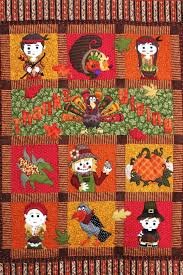
Quilting today is both an art form and a tradition. Some people follow in their grandmother’s footsteps; others discover quilting in adulthood, drawn by the tactile pleasure of fabric and thread, and the need to create something lasting in a fast-moving world. In recent years, quilting has seen a resurgence not just among older generations, but also younger ones seeking meaningful, mindful hobbies. Social media has sparked quilting challenges, digital pattern exchanges, and cozy subcultures dedicated to seasonal projects. Among these, Thanksgiving quilts have a special charm. Some stitch pumpkins and falling leaves. Others embroider phrases like “Gather Together” or “Grateful Hearts.” Many use warm-toned fabrics, flannel backings, or traditional blocks like Bear’s Paw, Autumn Star, and Harvest Braid. More than the design, though, it’s the intention that makes these quilts so special. They’re made to be used. To be laid over laps during post-dinner naps. To be spilled on by cranberry sauce and wiped with buttery fingers. To be part of the day, not just décor.
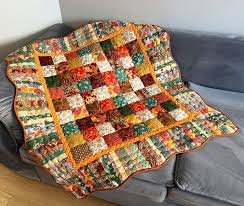
“Every Stitch Is a Thank You”: A Quilter’s Voice
Martha Klein, 62, has been quilting for over 40 years. Every fall, she makes a new mini quilt for Thanksgiving something she calls her “Gratitude Square.”
“It started when my kids were little,” she says. “I couldn’t always buy fancy things, but I could sew. So every year, I made a little quilted square for the table maybe with an acorn, or a turkey, or just the year stitched into it. Now I have over 30. They’re like a fabric photo album.”
She keeps them in a wooden box by the hearth. Each year, she lets her grandchildren choose one to place at the center of the Thanksgiving table.
“They ask me, ‘Who made this one, Grandma?’ and I say, ‘I did in 1996, when your daddy was your age.’ And we all smile. It’s a simple thing, but it means something.”
When asked what quilting means to her, Martha doesn’t hesitate:
“Every stitch is a thank you. For the people who came before me. For the ones I get to feed and love. For the fact that I’m here, with fabric in my hands, making something that might outlive me.”

After the pie is gone, and the dishes are done, and the last guest has stepped out into the chilly evening air there’s often a hush. The fire crackles lower. The house breathes again. That’s when the quilt comes out. Someone wraps it around their shoulders. Someone else curls up beneath it. Maybe a dog hops up too. It smells like home. And as the night settles in, and the stars blink cold in the sky, the quilt old or new, stitched or store-bought, fancy or frayed becomes a quiet symbol of all that Thanksgiving is: Warmth. Togetherness. Memory. And the simple act of being thankful.
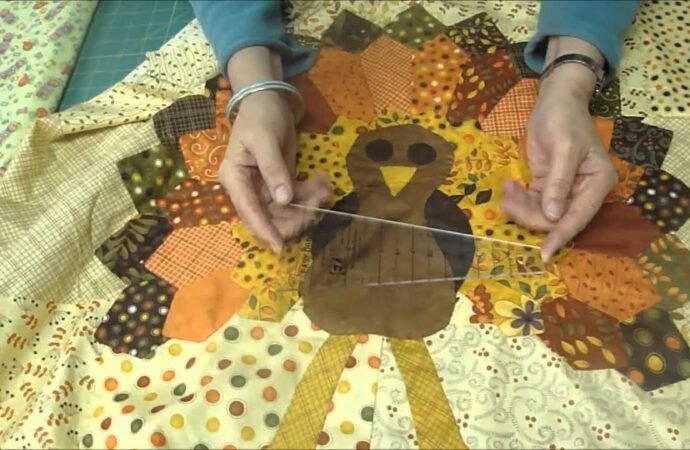

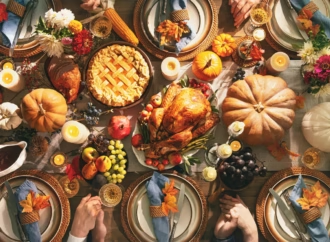
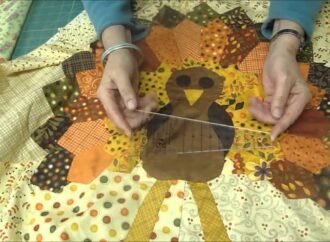
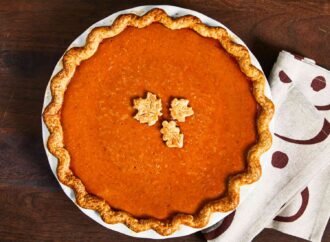


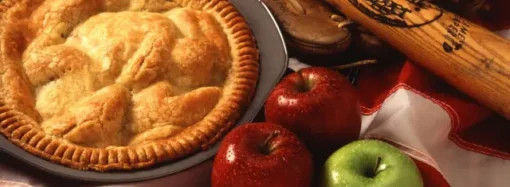

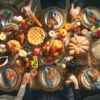
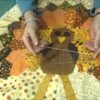






Leave a Comment
Your email address will not be published. Required fields are marked with *